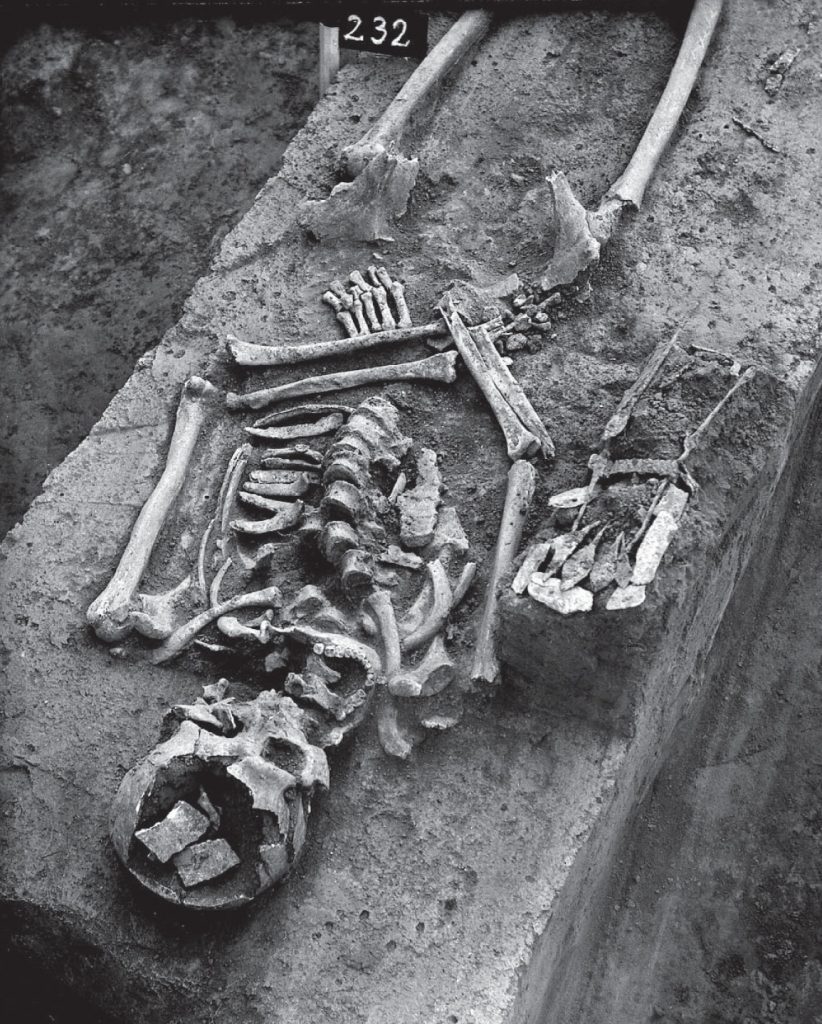THE PHYSICS OF ARCHERY
THE ARROW IS RELEASED BY MEANS OF THE BOW RELYING ONLY ON HUMAN STRENGTH, WITHOUT ANY EXTERNAL SOURCE OF ENERGY. FIRSTLY ONE HAS TO DRAW THE BOW, WHICH MEANS BENDING IT WITH THE SUFFICIENT MUSCLE STRENGTH AND LOOPING THE STRING AROUND THE TWO ENDS OF THE BOW-STICK. THE ENERGY APPLIED FOR DRAWING STAYS RESTORED WITHIN THE BOW. THE SECOND STEP IS PLACING THE ARROW ONTO THE BOW, AND POWERFULLY STRETCHING THE STRING BY THE HELP OF THE ARM MUSCLES. THIS POWER ADDS UP, CURVES INTO THE FLEXIBILITY OF THE WOOD AND THE STRING, SO THAT IN THE MOMENT OF THE RELEASE THE ENERGY GRADUALLY RESTORED CAN RAPIDLY AND ALL AT ONCE DISENGAGE, MAKING THE ARROW EJECT FAR OUT.
Experiments proved, that when flexing the arrow it is not the entire muscle strength that turns into projectile force, some of the energy is absorbed by the inflexibility of the bow, although the more flexible and well-proportioned the bow, the less energy goes to waste. The measure of the projectile force also depends on the mass of the bow and the arrow. Heavier, more massive recurve bows need to have longer arms, because the only way that the bow’s quality and good proportions don’t suffer disadvantages, if along with the weight the length of the arms increases as well.
 Having compared the different sorts of bows our physicist found that it was the composite reflex bow to come closest to the ideal condition. It was appointed that on the external side (the side that is further from the archer) of the bow stretching forces are present while on the interior pressing forces produce their effect. To be able to sustain the former, animal veins were found appropriate, (such veins used to constitute the external side of the composite reflex bow), while to outweigh the latter, the pressing force that is, the horn plates of the interior were suitable. „With the limber veins applied on the stretching side, ancient bow making exploited the possibilities of macromolecular chemistry, in as much as veins, being a congested, fibred connective tissue, could easily adapt to lengthwise stress.”–highlighted Fábián Gyula according to his own experiments.
Having compared the different sorts of bows our physicist found that it was the composite reflex bow to come closest to the ideal condition. It was appointed that on the external side (the side that is further from the archer) of the bow stretching forces are present while on the interior pressing forces produce their effect. To be able to sustain the former, animal veins were found appropriate, (such veins used to constitute the external side of the composite reflex bow), while to outweigh the latter, the pressing force that is, the horn plates of the interior were suitable. „With the limber veins applied on the stretching side, ancient bow making exploited the possibilities of macromolecular chemistry, in as much as veins, being a congested, fibred connective tissue, could easily adapt to lengthwise stress.”–highlighted Fábián Gyula according to his own experiments.
The efficiency of the bow is influenced by the cross-section of the arms.

The most effective shaping is when in the zone of the stretching forces the bow is narrower than in that of the pressing forces. Composite reflex bows perfectly meet the latter requirements –hence the cross-sections of the arms.
Let us note hereby that the latest sports bows are produced with these findings kept in mind. Their shape is an almost caricature-like imitation of the shape of Central Asian composite reflex bows, while their material is a supple, light, yet solid fibreglass polyester. Since these bows are made of but one layer, they may be considered as the most developed form of the simple reflex bow, thus it is only their reflexibility that distinguishes them from simple, old fashion (non-reflex) self-bows.
The size of the arrow—according to physics experiments—depends mainly on the size of the bow. When aiming it is the most convenient if the length of the arrow, whose tail is leaning against the string, doesn’t exceed the line of the brow’s arch.
Thus if the bow is stiffer, less flexible, when stretched, the wooden arc doesn’t diverge much from the string. In the latter case, shorter arrows are sufficient whereas in cases of lankier, more flexible bows longer arrows are required. We can draw the conclusion therefore that the length of the arrow is in direct proportion to that of the bow, and is in inverse proportion to the bow’s stiffness.

It is observable indeed, that fairly long, simple and flexible, non-reflex-bows are usually accompanied by the longest arrows — their length can exceed 1 meter–, while the arrows of shorter and stiffer composite reflex bows are conspicuously shorter –they never reach up to 1 meter in length. From the length of the arrow, therefore, some sort of limited conclusions can be drawn concerning the quality and size of the bow.
The mass of the arrow, thus its weigh influences the speed of the shot: the lighter the arrow the faster the aviation, however, the arrow’s weight can only be reduced until it can still overcome the drag (air resistance). The balance is most adequate if the centre of gravity falls close to the arrowhead, not only to be able to beat the drift but this way the arrow’s primary tasks: wounding, slashing and destruction can be assured as well.
When increasing the weigh of the arrow, in order to reach equal acceleration, of course, the effectiveness of the bow needs to increase simultaneously, moreover in such a way that its mass at the same time remains constant. Arrowheads made of light wood or bone can fly far out form weaker arrows as well, while metal arrowheads require more powerful bows to be able to reach equal distance.




